Build Your Own: Wall-Sized 3D Gaming, Just Like Theaters Do It
Hardware: Dual-Projector 3D Theater Checklist
You already know the method we're using for our wall-sized 3D display: a dual-projection, polarized-filter system just like the theaters use. We have also described the required iZ3D and TriDef stereoscopic 3D drivers, both of which are compatible with the dual-projection setup. Now, we can get to the nitty-gritty of the actual components and their cost.
Polarized Filters
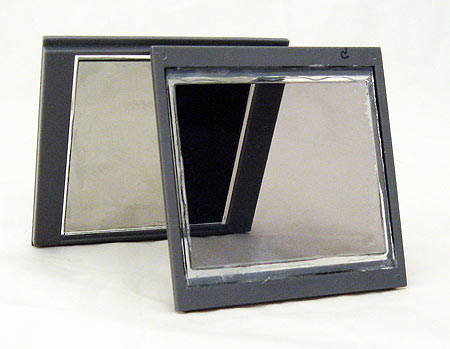
There are a number of sources for polarized filters, but when I asked experienced dual-projector theater enthusiasts where to look, I was often directed to awater 3D. Though the firm is located in Germany, awater 3D is convenient for English speakers because its Web site has an English portal. More importantly, Monika Awater (the company's representative) can provide both advice and quotes in English and was indispensable as a source of information for this story.
The best polarized filters awater 3D offers require an LCD projector to use, but since we were using DLP projectors, Monika recommended something more appropriate for our application: a set of two 3" x 3" 3D polarized filters that cost about $400. There are cheaper filters out there, but filters that will withstand the heat from the projector and allow a lot of light to pass through are worth the expense. The price of filters can vary depending on the amount of light and heat your projectors generate.
On a side note, I did a little experiment using the polarized filters built into a pair of 3D glasses I got from my local theater. I cut the glasses in half and used each half of the glasses to polarize the light from the projector. It worked great--for about five minutes. Then I noticed the output getting blurry:
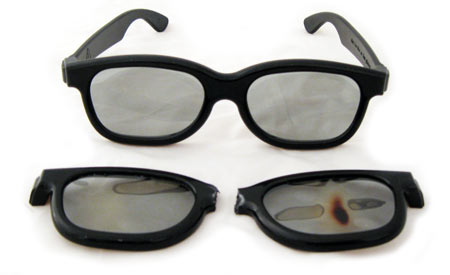
The heat from the powerful projector bulb was melting the polarized lenses. This is why it's probably worth it to spend some real money on polarized filters built to withstand the rigors of high-lumen heat absorption.
Screen
Get Tom's Hardware's best news and in-depth reviews, straight to your inbox.
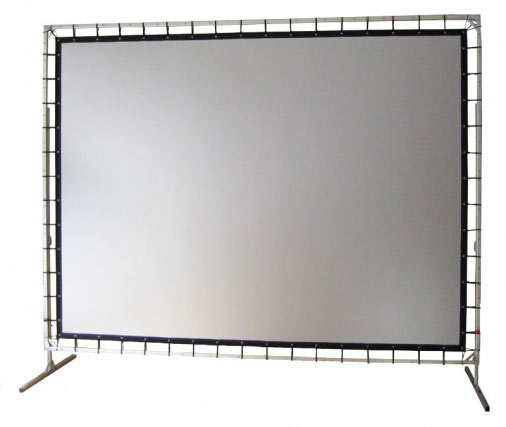
For a polarized 3D theater to work, the screen has to be a special type that will maintain the polarization of the light. We use a 2.4m x 1.8m awater 3D stereo screen to do the job. The $145 retail price includes a black border, eyelets, and mounting strips. This screen is washable and can be rolled up for transport.
Polarized 3D Glasses

On the glasses front, we have good news and bad news. The bad news is you can't use the glasses you kept from the last 3D film you watched, as it was probably shown in the RealD or Dolby 3D standard, and both use unique non-linear polarized filters. The good news is that regular polarized glasses can be purchased for under $1 a piece and are much cheaper if you buy them in bulk. Fancier models with plastic frames are also available at a reasonable price. Let's attribute $20 for this expense as this will get you a lot of cheaper glasses or a couple high-end models.
A Home-Theater PC With a Dual-Output Graphics Card
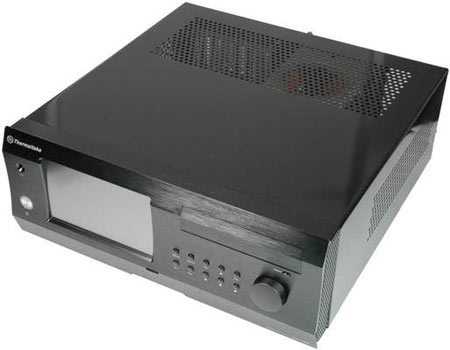
Almost any PC will work. Of course, if you plan to play a lot of games, you'll want a powerful graphics card. 3D stereoscopic output tends to emasculate performance, so big graphics guns are the order of the day. The CPU isn't as critical, but you'll want something decent so as not to bottleneck the system. We chose the Radeon HD 4890 and GeForce GTX 260 for our tests.
Projectors

Here's where the bulk of the money gets spent. When purchasing a projector for gaming use, there are three main factors to consider: brightness, resolution, and cost. Brightness is important because a substantial amount of light from the projector will get reflected or blocked when it goes through the polarized filter. Resolution is important because when you're playing on a wall-sized display, low resolutions won't be pretty. As for price, keep in mind that you'll have to buy two projectors for this application, so your costs will instantly double. Another consideration is the contrast ratio, as a high ratio will produce a better viewing experience, so that movies will look as good as possible.

Our target was to keep the cost of each projector to $1,000 or below. Because we were more concerned with the light output than the resolution, we chose BenQ's new W600 projector for our tests. With 2,600 lumens, it's very bright and the 720p resolution is quite good for a projector in this price range. Since it's a DLP projector, it sports a great 3000:1 contrast ratio. The $900 MSRP keeps the price below our threshold, with a pair of projectors weighing in at a very reasonable $1,800.
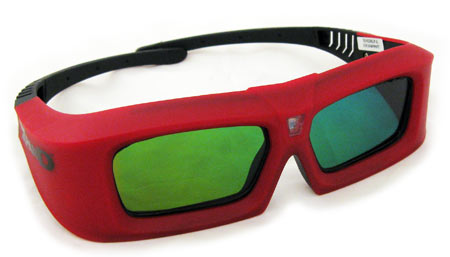
It's worth noting that the BenQ W600 is compatible with the HQFS DVD format, an alternate frame sequencing standard that uses LCD shutter glasses and a standard DVD player. The DVDs specially mastered for this format will send a signal out over the video stream to the glasses sensor. We didn't have any HQFS DVDs to test and the format doesn't have a great deal of industry support, but since BenQ sent us a pair of HQFS-compatible Xpand 3D glasses for testing, we thought we'd mention it.
3D Drivers
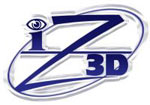

We are trying out both the iZ3D and DDD TriDef drivers for our polarized dual-projection system. At $50 each, it adds a quick $100 to the budget.
Mounting Hardware and Cables
We found great projector ceiling mounts for $15 each at Monoprice. DVI-to-HDMI cables are also nice to have, and we paid about $50 total for two 35-ft. specimens. The only difficult-to-find item was something to hold the polarized filters in front of the projectors, as there is no cheap ready-made alternative for this application. All of the dedicated polarized filter-mounting hardware we found cost hundreds of dollars. To keep the price down, we bought a pair of $5 used tools locally and scavenged the mounting hardware from them. It might not be the most elegant solution, but it worked and saved us a ton of dough. After all was said and done, the mounting hardware and cables cost less than $100.
What's the Total?
We're going to leave out the price of the PC from this setup as folks may opt to use their existing PCs to drive the wall-sized 3D display. Tallying up all of the other costs, our final total of $2,565 for polarized 3D-theater hardware remains comfortably below the $3,000 mark and is certainly comparable to other alternate-frame-sequencing 3D displays out there.
Current page: Hardware: Dual-Projector 3D Theater Checklist
Prev Page Software: 3D Drivers For Games And Movies Next Page Installation And Set UpDon Woligroski was a former senior hardware editor for Tom's Hardware. He has covered a wide range of PC hardware topics, including CPUs, GPUs, system building, and emerging technologies.
-
Don't gives too big an image to try and see it 3d. A monitor can't handle: 800px \00d7 248px!!!! That's just crazy big!!!Reply
-
Icehearted As for poor folk like me, we'll just settle for those still images where we cross our eyes, and cry because $2,565 is far away from "comfortable".Reply -
tigerwraith 2.6k now but you know things like this keep getting cheaper and cheaper. Maybe by this time next year, the 1080p 2600 lumens will drop to 500, and the drivers will better support dual projector setups.Reply -
gti88 Great article! Thanx a lot.Reply
But as I can see, 3D stereo is not there yet.
Almost no movies are available at 3DS, and game developers don't focus on stereo optimisation. Thus, we have some glitches and inconveniences. -
pojih ahh, something else to cost an arm and a leg...Reply
not saying that many people here don't want the fastest and most expensive....
but it was clearly shown that many people looking at this site want something that performs for what it costs, as seen by the fermi release and the comments ..... -
skora Whats the next price bracket up for a projector with higher res?Reply
I like the idea of dual projectors better than the alt-image standard, but they didn't ask me.
Here's a wild thought, soon, everyone will have their own glasses that not only do the shutter for 3D, but will also be able to be personal monitors. Connect to any computer/phone/TV with your glasses. Displays might even become unnecessary. That will be the next wireless mainstream device. The iShades. Phone, mobile pc and display, earbud is right there. Have pants that have built in keyboard. We'll all just be sitting there with our shades on and never see the person next to us as we get lost in the cloud. And it all starts with 3D glasses. :P -
djab IceheartedAs for poor folk like me, we'll just settle for those still images where we cross our eyes, and cry because $2,565 is far away from "comfortable".Reply
No, you can at least use red/cyan paper glasses with iz3d drivers and a normal display.
That is not that bad!